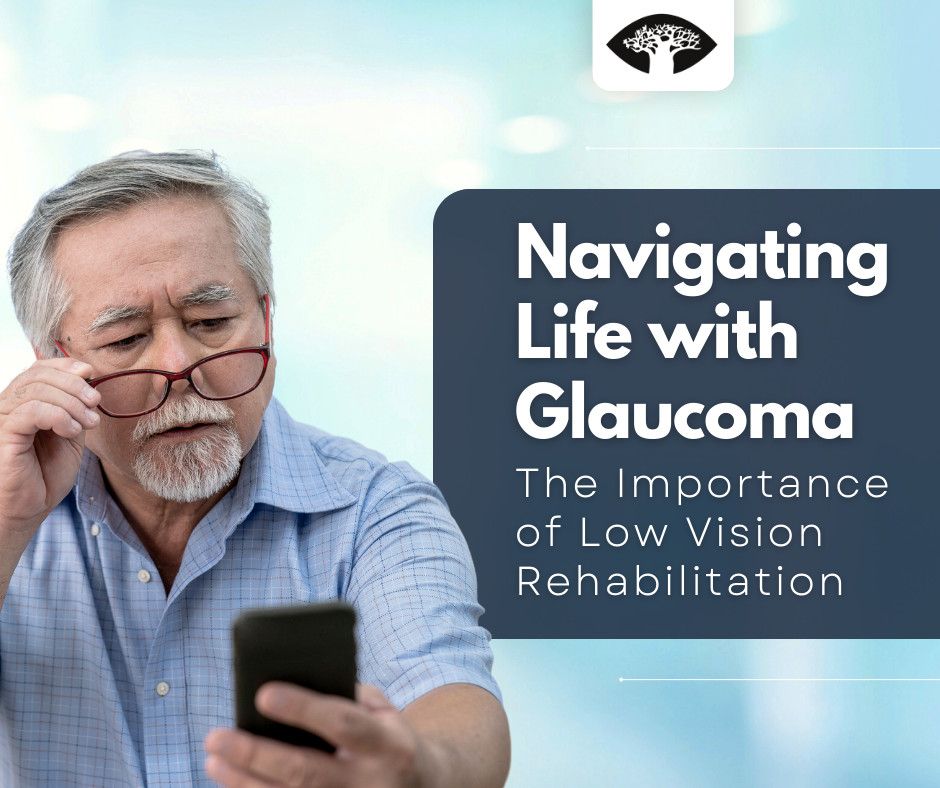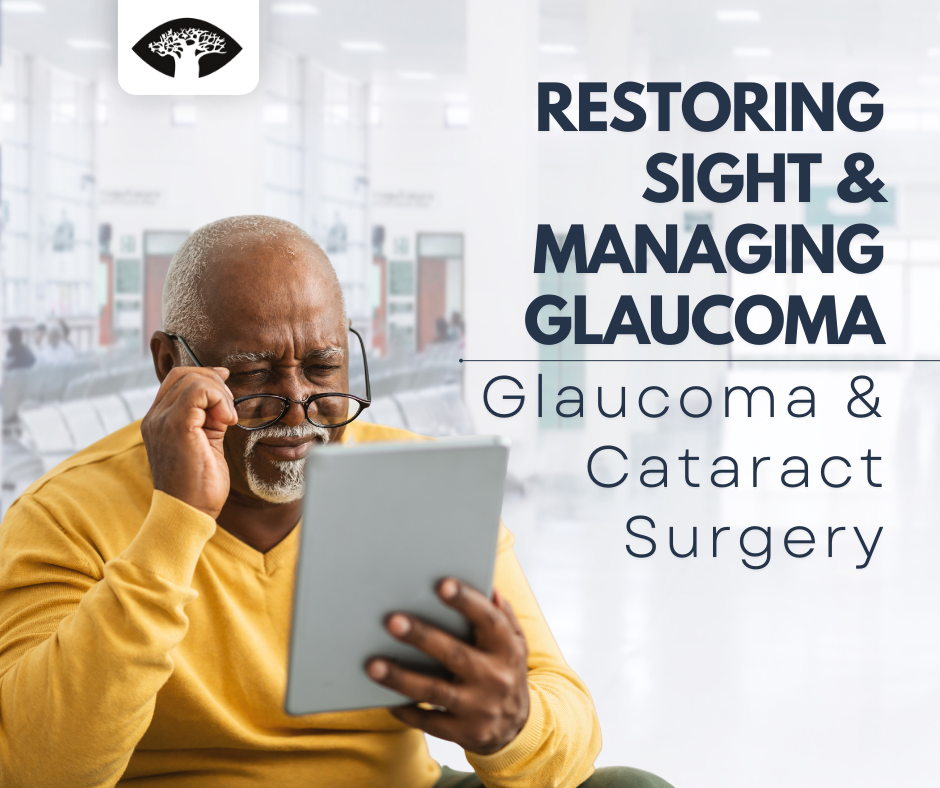Glaucoma is a progressive eye disease that affects the optic nerve, causing vision loss. It is a leading cause of blindness worldwide, and it is estimated that over 60 million people are affected by glaucoma globally. The disease often goes unnoticed in its early stages, and vision loss can be irreversible if left untreated.
Low vision rehabilitation is a specialized treatment option for patients with glaucoma who have lost a significant amount of vision. It helps patients to learn how to use their remaining vision effectively and to adapt to their visual impairments. In this article, we will discuss the importance of low vision rehabilitation for patients with glaucoma and the different techniques and devices that can be used to improve vision and quality of life.
Understanding Glaucoma
Glaucoma is a group of eye diseases that cause damage to the optic nerve, the part of the eye that carries visual information to the brain. The optic nerve is responsible for transmitting light and images to the brain, allowing us to see. In glaucoma, the optic nerve is damaged, causing vision loss.
There are two main types of glaucoma: open-angle glaucoma and angle-closure glaucoma. Open-angle glaucoma is the most common type, and it occurs when the drainage angle in the eye is open but not functioning properly. This leads to a build-up of pressure in the eye, called intraocular pressure (IOP), which can damage the optic nerve.
Angle-closure glaucoma is less common, and it occurs when the drainage angle in the eye is closed or blocked. This leads to a sudden increase in IOP, which can cause severe vision loss if not treated promptly.
To learn more about acute angle closure glaucoma watch the video below:
Symptoms of Glaucoma
Glaucoma often goes unnoticed in its early stages, as there are usually no symptoms. As the disease progresses, patients may experience symptoms such as:
- Blurred vision
- Tunnel vision
- Loss of peripheral vision
- Halos around lights
- Pain or pressure in the eye
It is important to note that these symptoms may not occur until the disease is in its advanced stages, which is why regular eye exams are crucial for early detection and treatment of glaucoma.
To learn more about the importance of complete eye exams watch the video below:
The Importance of Low Vision Rehabilitation
Low vision rehabilitation is a specialized treatment option for patients with glaucoma who have lost a significant amount of vision. It helps patients to learn how to use their remaining vision effectively and to adapt to their visual impairments.
Low vision rehabilitation is important for patients with glaucoma because it can help to improve their quality of life. It can help patients to maintain their independence, allowing them to continue to do the things they enjoy, such as reading, watching television, and even driving.
Low vision rehabilitation can also help to improve the psychological well-being of patients with glaucoma. Vision loss can be a traumatic experience, and patients may feel depressed, anxious, or even isolated. Low vision rehabilitation can help patients to cope with their visual impairments and to regain a sense of control over their lives.
Techniques and Devices for Low Vision Rehabilitation
Low vision rehabilitation is a multidisciplinary approach that involves a team of specialists, including ophthalmologists, optometrists, occupational therapists, and low vision therapists. The team will work together to assess the patient’s visual needs and to develop an individualized treatment plan.
There are several techniques and devices that can be used to improve vision and quality of life for patients with glaucoma, including:
- Magnifiers: Magnifiers are devices that enlarge text and images, making them easier to see. There are different types of magnifiers, such as hand-held, stand, and electronic magnifiers, each with their own advantages and disadvantages. Magnifiers can be used to read books, newspapers, and even computer screens.
- Closed-circuit televisions (CCTVs): CCTV’s are electronic devices that magnify text and images on a monitor, making them easier to see. They can be used to read books, newspapers, and even computer screens. CCTV’s can also be used to write, watch television, and even shop online.
- Low vision glasses: Low vision glasses are specially designed glasses that can help to improve vision for patients with glaucoma. They can help to magnify text and images, improve contrast, and even reduce glare. Low vision glasses can be used for reading, watching television, and even driving.
- Adaptive devices: Adaptive devices are devices that can help patients with glaucoma to adapt to their visual impairments. They can include things like talking clocks and watches, large-print telephones, and even voice-activated devices. Adaptive devices can help patients to maintain their independence and to continue to do the things they enjoy.
Training and Education
Adapting to visual impairments caused by glaucoma can be a difficult and overwhelming process, but there are various techniques that can help patients to adjust and continue to live an active and fulfilling life.
One of the key techniques for adapting to visual impairments is learning to use remaining vision effectively. This can involve techniques such as scanning, tracking, and peripheral vision training. Scanning involves moving the eyes quickly across an area to take in as much visual information as possible, while tracking involves following a moving object or person with the eyes. Peripheral vision training helps to strengthen the use of peripheral vision, which is often not preserved in patients with glaucoma.
Environmental modifications, such as creating a visually-friendly home environment and using proper lighting, can also greatly benefit patients with visual impairments. This can include things like placing furniture in a way that makes it easier to navigate, adding additional lighting, and using contrasting colors to make objects stand out.
Additionally, learning to use non-visual cues, such as touch and sound, can help patients to navigate their environment and complete daily tasks. For example, a patient may use the sound of a doorbell to locate the front door, or use touch to navigate a familiar room.
Finally, it’s important for patients to have access to emotional and psychological support. Vision loss can be a traumatic experience, and patients may feel depressed, anxious, or even isolated. Support groups and counseling can provide patients with a sense of community and the tools to cope with their visual impairments.
To learn more about living with glaucoma watch the video below:
Conclusion
Low vision rehabilitation can improve the quality of life for patients with glaucoma, allowing them to maintain their independence and to continue to do the things they enjoy. There are several techniques and devices that can be used to improve vision and quality of life for patients with glaucoma, including magnifiers, closed-circuit televisions, low vision glasses, adaptive devices, and training and education. If you or a loved one is affected by glaucoma, it is important to speak with an ophthalmologist about the options available for low vision rehabilitation.



